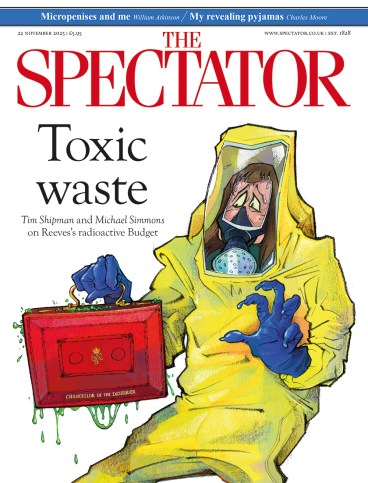
Imagine dropping a pea-sized capsule through a spherical chamber and hitting it with a colossal bolt of laser energy as it falls. If the capsule contains a mixture of deuterium and tritium, two heavy versions (isotopes) of hydrogen, then the atoms may fuse, turning into helium and emitting fast neutrons as they do so. Those neutrons and their accompanying radiation can heat molten salts around the walls of the chamber and that heat can be used to power industrial processes – or to boil water and generate electricity through a steam turbine.
That’s the dream of a firm called Xcimer, one of the more ingenious fusion energy startups, based in Colorado. Three years ago, on 5 December 2022, at the Lawrence Livermore National Laboratory in California, this technique was used to reach a significant milestone in the search for near-limitless energy from fusion, the process that fuels stars (and hydrogen bombs). The experiment generated an ‘ignition’ event in which more energy came out than went in: 3.15 megajoules out from 2.05 megajoules in.
Whether it can be made cheap will depend on the physics but even more on the regulation
In the words of those who did that experiment, 192 laser beams were fired into a cylinder called a ‘hohlraum’, generating a ‘bath’ of ‘soft’ X-rays that blew off the surface of a ‘peppercorn-sized capsule’, resulting in a ‘rocket-like implosion’ creating pressure and temperature ‘found only in the cores of stars and giant planets and in exploding nuclear weapons’.
Fusion energy holds enormous, if distant, promise. We know it works in stars. Its fuel is all but limitless, being made from water (some of which contains deuterium) and lithium (which can be made into tritium by bombarding it with neutrons). The energy released from fusing small atoms is at least four times greater per event than from splitting large ones (nuclear fission). Fusion does not generate long-lived radioactive waste like fission does (tritium is beta-radioactive with a half-life of just 12 years). A fusion reactor cannot have a chain reaction and will not be able to explode or melt down. In theory a small facility with no more environmental risk attached than in a typical industrial process could power a whole town. But that’s in theory; making it work in practice is far harder.
Until 2022 – a year that is looking increasingly like a possible hinge of history given that it was also in November that year that the launch of ChatGPT sparked the artificial intelligence craze – the best bet for achieving fusion looked as if it would come from a different technology, the torus or tokamak. This is where a gaseous plasma of deuterium and tritium is suspended by massive electromagnets inside a chamber the shape of a doughnut or cored apple and heated to over 100 million degrees centigrade to initiate fusion.
Tokamak-based fusion projects have been inching towards net energy production for decades, generating less energy than cynicism about whether they would ever get there. To some, public-funded fusion has begun to seem more like a leisurely scheme for employing physicists than an urgent push to solve the world’s energy needs.
For example, the Joint European Torus machine in Oxfordshire set the record for energy generation in a controlled fusion reaction as long ago as 1997 (16 megawatts out, but from 24 megawatts in). Still more slowly, the $25 billion ITER project in southern France, a collaboration of 33 governments, began in 1985, broke ground in 2007, started assembling its machine in 2020, plans to commence research operation in 2036 and hopes to fuse deuterium with tritium generating net energy in 2039.
Thus the suspicion occurs that taking decades is less a necessity and more a plan. Around ten years ago a few impatient physicists began to leave for the private sector to speed things up. Such a goal looked newly plausible, thanks to compact magnets made possible by the invention of high-temperature superconductors – ceramic alloys of rare metals that lose almost all electrical resistance at temperatures well above the boiling point of liquid nitrogen, minus 210 degrees centigrade. In 2022 (again!) Tokamak Energy in Britain became the first private company to achieve the threshold temperature for fusion of 100 million degrees in a plasma, though not for more than an instant.
There are now around a dozen firms worldwide racing to be the first to generate fusion energy. Commonwealth Fusion Systems in Massachusetts has raised nearly $3 billion and is expecting to get net energy from a compact tokamak in 2027. Others are abandoning tokamaks: Helion in Washington state and TAE Technologies in California plan to use ‘field-reversed configuration’ to fire two balls of plasma into each other. Xcimer’s approach of firing lasers at a series of falling capsules of fuel would in effect turn the reactor into a batch process rather than a continuous one. These startups are beginning to look like a hare compared to the tortoise of the public sector projects – but remember what happened to the hare.
A challenge faced by all fusion technologies is how to cope with the high-energy neutrons released during the reaction. These would deliver the energy you are after but they would also cause havoc with almost any solid material, turning the steel of the reactor itself into a corroded mess. The solution to this that some firms are planning is to line the reactor with lithium, which would absorb the neutrons, preventing them reaching the steel, and better still turning some of the lithium ions into tritium by radioactive decay – thus generating the fuel needed for the reaction. Neat, but easier said than done.
Others think a better bet is to abandon deuterium-tritium altogether and instead go for proton-boron fusion, which produces heat but no neutrons. The boron turns into carbon, releasing alpha particles that decay to helium. What’s the catch? That you would need to reach more than a billion degrees centigrade rather than 100 million. Still, that’s not going to deter ambitious entrepreneurs.
In 2023 TAE Technologies teamed up with scientists at Japan’s National Institute for Fusion Science and managed to achieve proton-boron fusion in a magnetically confined plasma for the first time. More energy in than out, of course, but TAE thinks a commercial reactor in the 2030s may be possible.
Fusion power could prove eternally out of reach or be only ten years away. It is unlikely to be providing electricity in a significant way before 2050. Whether it can be made cheap will depend on the physics but even more on the regulation. It was the rules and regulations, standards and certifications that caused nuclear to stall, despite its excellent safety record. Going back to the regulator for permission to change every weld and nut destroyed the nuclear industry’s ability to learn how to bring down costs. This stifled innovation and added nothing to safety. Please don’t let’s do that to fusion.








Comments